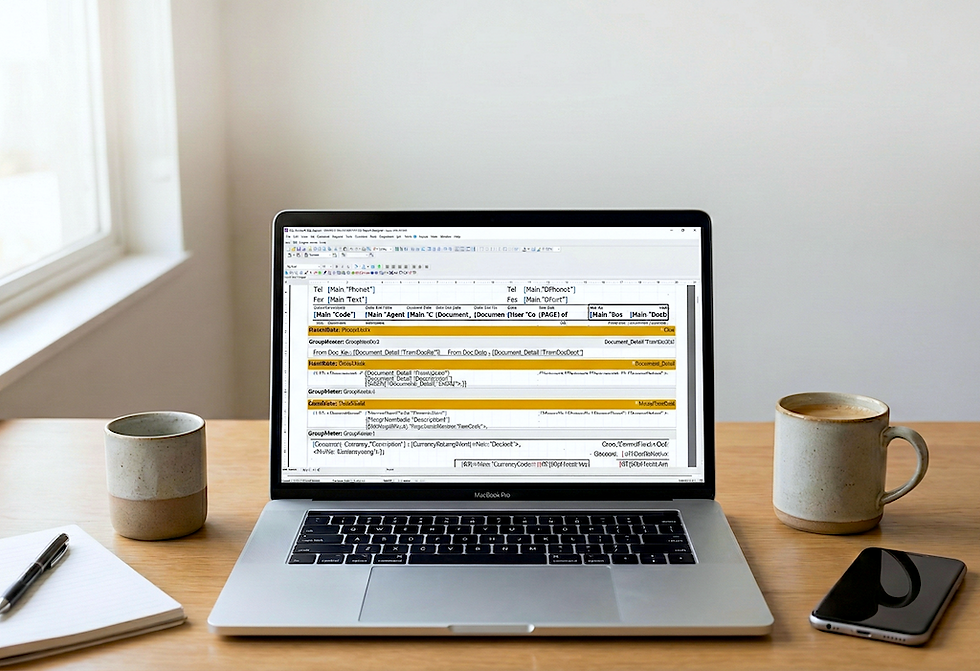20 Useful Accounting Terms Business Owners Should Know
- Carol Kok
- Aug 2, 2017
- 4 min read

Not everyone has the opportunity to study accounting, but it would come in handy if you know some of the accounting terms when you're running your own business. Step ahead and learn 20 useful accounting terms that every business owner should know.
1. Accounts Receivable
Accounts receivable includes amount owed by customers for supply of goods and/or services. It is considered a current asset on a company’s balance sheet since it is usually convertible into cash in less than one year.
2. Accounts Payable
Accounts payable includes amount owed to suppliers for purchase of goods and/or services on credit. It is considered a current liability on a company’s balance sheet as it is a short-term debt payments a business need to make to its suppliers.
3. Profit & Loss Report
It is also called P&L, income statement, or statement of comprehensive income. This report list out the company's revenue, cost of goods sold, expenses and net profits for a given period of time.
4. Revenue
Revenue, or income is the total sales amount collected for goods or services sold before any purchases and expenses are subtracted. It also includes any credits or discounts for goods returned.
5. Cost of Goods Sold
Also called cost of sales, is a calculation of all the direct cost involved in generating your revenue. It can be stock purchased, or labor cost involved if you're in the service business.
6. Operating Expenses
Accounts receivable includes money owed by customers to another company or individual as
7. Balance Sheet Report
This is one of the main financial statement. The balance sheet reports assets, liabilities, and owner's capital at a specific point of time.The balance sheet is also referred as statement of financial position.
8. Asset
Assets includes resources owned by the company that can be measured and expressed in dollars. For example, tangible assets such as furniture & fittings, equipment, motor vehicles, cash in hand or bank, inventory, and account receivables; Intangible assets such as copyrights, patents and trademarks.
9. Liability
Liabilities are debts that a company is responsible to pay in the short or long term. That includes bank loan, account payables, mortgage, accrued expenses, and deferred taxation.
10. Inventory
The cost of the stock purchased but not yet sold is reported as Inventory under current assets on the company's balance sheet. It can be raw materials, work-in-process products, and finished goods that are ready or will be ready for sale.
11. Equity
Equity, also called net assets (In Balance Sheet: Asset - Liabilities = Equity). It also refers as the amount of corporate assets that the shareholders own net of debt and liabilities. This is their interest in the company.
12. Depreciation
Depreciation is an accounting method of assigning or allocating the cost of company's fixed asset over its useful life. Depreciation not only shows the real value of the fixed asset after wear and tear through time, it is also required to show the actual cost of the fixed assets allocated to monthly or yearly accounting periods in which the company will benefit from its use.
13. Accrued Sales
Accrued sales includes sales that has been sold or completed by the seller, but not yet billed to the customer.
14. Accrued Expenses
Accrued expenses is a list of expenses that have been incurred, but not yet billed by the supplier.
15. General Ledger Report
This is the complete records of the company's financial transactions. It holds all the information needed to prepare company's financial statements such as balance sheet, profit and loss, and trial balance report.
15. Journal Entry
Commonly used for adjusting entries. While most of the journal entries are done automatically by accounting software today, some transactions such as depreciation and accruals will still need to be done manually using journal entry.
16. Trial Balance Report
Trial Balance is a list of closing balances of ledger accounts in month end or year end. It serves to detect any mathematical errors that have occurred in the double-entry accounting system. If the total debits equal the total credits, the trial balance is considered to be balanced, and there should be no mathematical errors in the ledgers.
17. Fiscal Year
Fiscal year refers to the period that a company uses for accounting purposes and prepare financial statements. It may be the calendar year e.g. 1st Jan to 31st Dec; It can also be different, such as 1st Apr to 31st Mar or 1st Nov to 31st Oct.
18. Share Capital
Share capital is the amount of money that has been invested in the company by its owners.
19. Retained Earnings
Retained earnings is a company's cumulative earnings since the company was formed minus the dividends (if any) it has declared since it began. In other words, retained earnings represents the company's cumulative earnings that have not been distributed to its owner or shareholders.
20. Cash Flow Statement
The cash flow statement is very important as the revenues reported in your profit and loss report were earned but you might not have collect the money from your customers. Similarly the expenses reported in your profit and loss report were incurred but you might not have paid to your suppliers. In order to understand how cash has changed, and because many believe that "cash is king", the cash flow statement should be distributed and read at the same time as the income statement and balance sheet.
Now that you have a good understanding of the accounting terms, you're ready to apply it to understand the report figures behind your business more effectively.





Comments